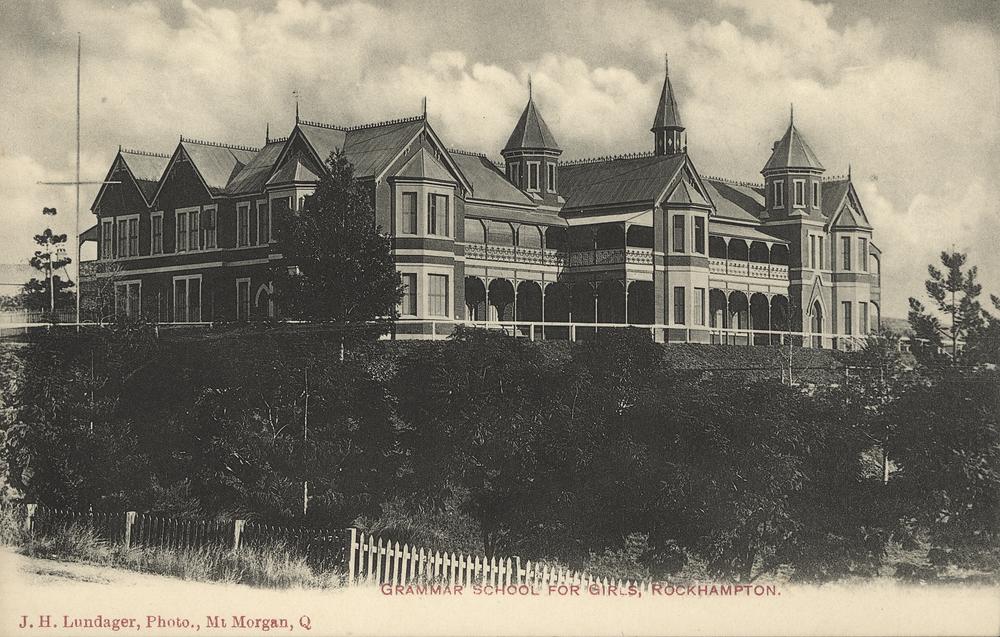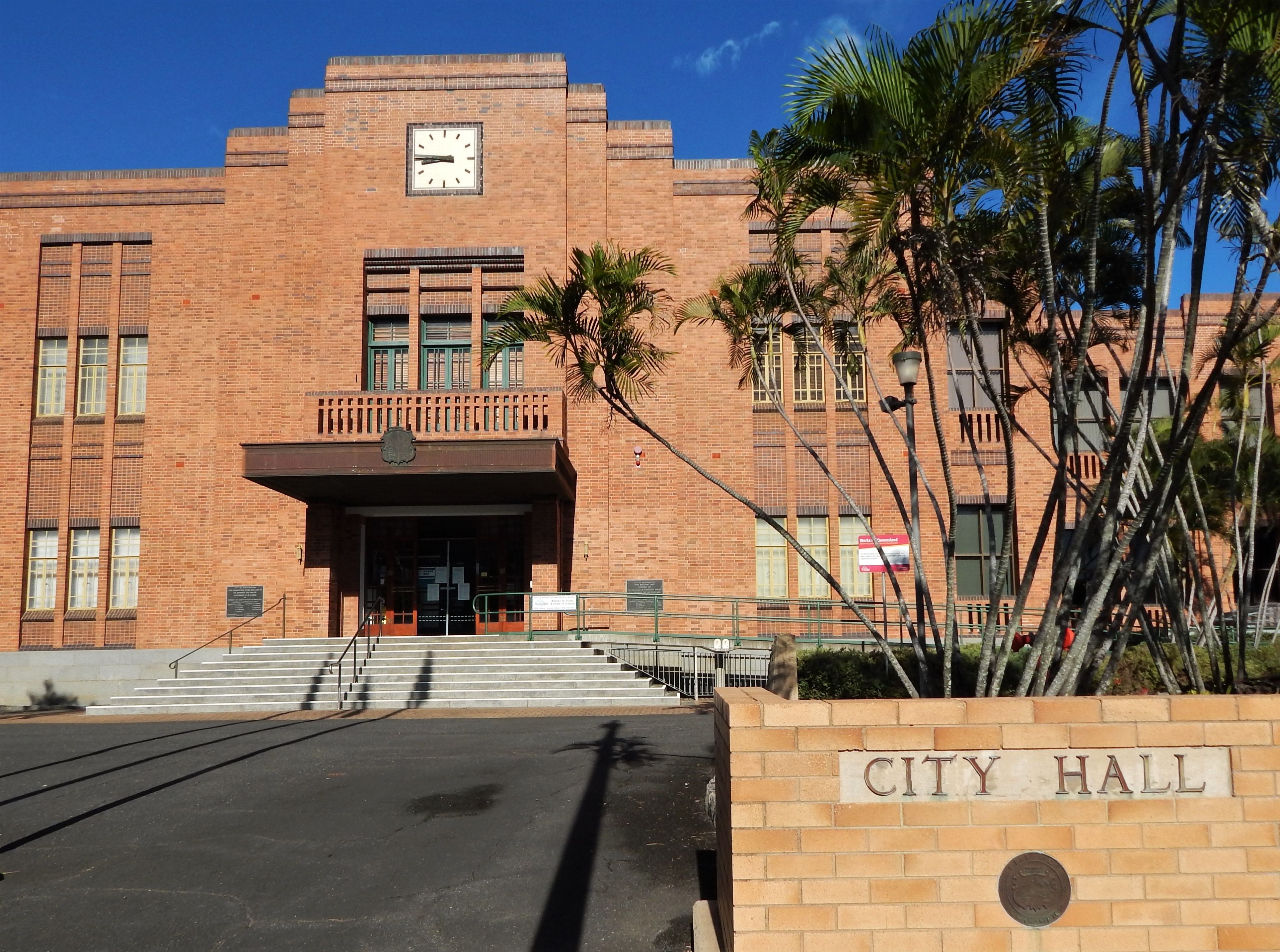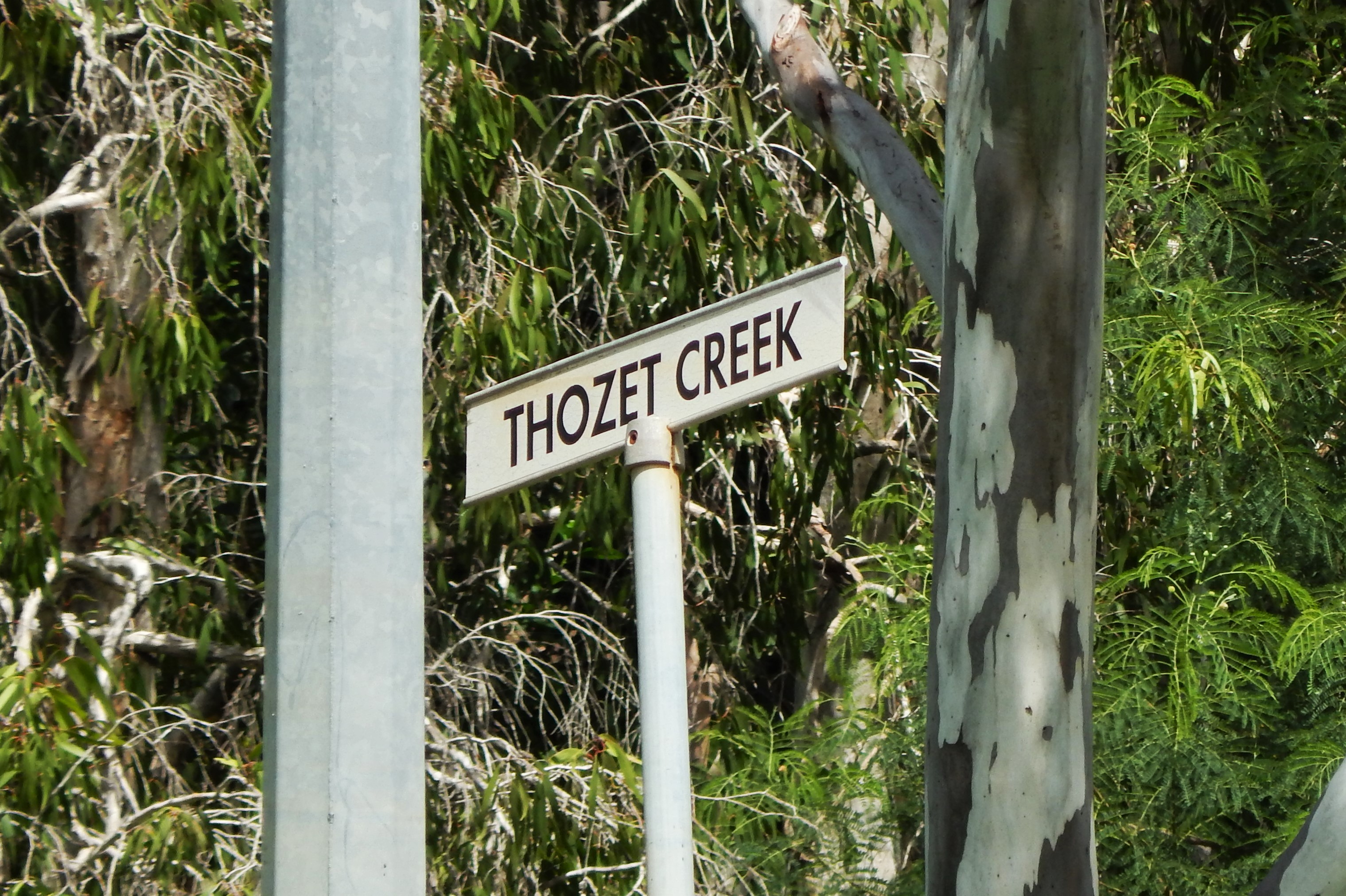|
Rockhampton War Memorial
Rockhampton War Memorial is a heritage-listed memorial in the Rockhampton Botanic Gardens at Penlington Street, The Range, Rockhampton, Rockhampton Region, Queensland, Australia. It was built in 1924. It was added to the Queensland Heritage Register on 21 October 1992. History The Rockhampton War Memorial was unveiled on 16 October 1924 by the Governor of Queensland Sir Matthew Nathan. It was designed by architects Hockings and Palmer and produced by monumental masons, F M Allen. The granite memorial honours those who served in the First World War. A public meeting was held in February 1919, when it was decided to erect a memorial to those who served in the First World War. It was to be a regional monument, representing surrounding districts, but erected in Rockhampton. In 1921, a site was selected on the riverbank and a national design competition was announced by the newly formed Central Queensland War Memorial Committee. This however, was not successful as most designs w ... [...More Info...] [...Related Items...] OR: [Wikipedia] [Google] [Baidu] |
The Range, Queensland
The Range is a suburb in the Rockhampton Region, Queensland, Australia. In the The Range had a population of 5,400 people. Geography The suburb is built on the Athelstane Range with Agnes Street approximating the ridge line. History The suburb takes its name from the Athelstane Range, which was named in turn for Mount Athelstane, the name of the house built by lands commissioner William Wiseman circa 1859. Rockhampton's first water storage was built on the top of Governor's Hill (part of Atheltstane Range) in 1875. Rockhampton Grammar School was built in Agnes Street in 1883 and is the oldest school in Rockhampton. At the 2006 census, The Range had a population of 5,731. In the 2011 census, The Range had a population of 5369 people. In the The Range had a population of 5,400 people. Heritage listings The Range has a number of heritage-listed properties, including: * 155 Agnes Street: Rockhampton Girls Grammar School * 248 Agnes Street: Rudd Residence * 263 Agnes Str ... [...More Info...] [...Related Items...] OR: [Wikipedia] [Google] [Baidu] |
Rockhampton Girls Grammar School
Rockhampton Girls Grammar School is a heritage-listed private school at 155 Agnes Street, The Range, Queensland, The Range, Rockhampton, Rockhampton Region, Queensland, Australia. It was designed by Edwin Morton Hockings and built in 1890 by Moir Cousins and Co. It was added to the Queensland Heritage Register on 20 October 2000. History The Rockhampton Girls Grammar School opened on 19 April 1892. There was no ceremony to mark the occasion due to the serious illness of George Barnsley Shaw, who had been very active in the establishment of the school; Shaw died on 20 April 1892. The first headmistress was Helen Downs. It was the ninth of the grammar schools to be established in Queensland and the third grammar school for girls. As with the other grammar schools, it was constituted under the Grammar Schools Act 1860, Grammar Schools Act of 1860, one of the first pieces of legislation passed by the Parliament of Queensland, Queensland Parliament, which encouraged by way of gran ... [...More Info...] [...Related Items...] OR: [Wikipedia] [Google] [Baidu] |
Australian Patriotism
Australian patriotism is patriotism involving cultural attachment of Australians to Australia as their homeland. Australian patriotism has been identified by some as distinct from Australian nationalism because of the emphasis of Australian patriotism upon values rather than a commitment to a nation. According to the 2014 World Values Survey, over 90 per cent of Australians are either "very proud" or "quite proud" of their nation. See also * Australianism (other) * Australophile * Australian nationalism * God's Own Country "God's Own Country" is a phrase meaning an area, region or place supposedly favoured by God. Examples Australia In Australia, the phrase "God's own country" was often used to describe the country in the early 1900s, but it appears to have gr ... * Reclaiming Patriotism References {{Australia-stub ... [...More Info...] [...Related Items...] OR: [Wikipedia] [Google] [Baidu] |
Pedestal
A pedestal (from French ''piédestal'', Italian ''piedistallo'' 'foot of a stall') or plinth is a support at the bottom of a statue, vase, column, or certain altars. Smaller pedestals, especially if round in shape, may be called socles. In civil engineering, it is also called ''basement''. The minimum height of the plinth is usually kept as 45 cm (for buildings). It transmits loads from superstructure to the substructure and acts as the retaining wall for the filling inside the plinth or raised floor. In sculpting, the terms base, plinth, and pedestal are defined according to their subtle differences. A base is defined as a large mass that supports the sculpture from below. A plinth is defined as a flat and planar support which separates the sculpture from the environment. A pedestal, on the other hand, is defined as a shaft-like form that raises the sculpture and separates it from the base. An elevated pedestal or plinth that bears a statue, and which is raised from th ... [...More Info...] [...Related Items...] OR: [Wikipedia] [Google] [Baidu] |
Plinth
A pedestal (from French ''piédestal'', Italian ''piedistallo'' 'foot of a stall') or plinth is a support at the bottom of a statue, vase, column, or certain altars. Smaller pedestals, especially if round in shape, may be called socles. In civil engineering, it is also called ''basement''. The minimum height of the plinth is usually kept as 45 cm (for buildings). It transmits loads from superstructure to the substructure and acts as the retaining wall for the filling inside the plinth or raised floor. In sculpting, the terms base, plinth, and pedestal are defined according to their subtle differences. A base is defined as a large mass that supports the sculpture from below. A plinth is defined as a flat and planar support which separates the sculpture from the environment. A pedestal, on the other hand, is defined as a shaft-like form that raises the sculpture and separates it from the base. An elevated pedestal or plinth that bears a statue, and which is raised from ... [...More Info...] [...Related Items...] OR: [Wikipedia] [Google] [Baidu] |
Gracemere, Queensland
Gracemere is a rural town and locality in the Rockhampton Region, Queensland, Australia. In the , the locality of Gracemere had a population of 11,315 people. Geography Gracemere is approximately west of the city of Rockhampton. Because of the proximity of the town to Rockhampton, Gracemere has become a dormitory town, with many residents commuting the short distance to work in the city. Gracemere Lagoon is to the north of the town (). The Capricorn Highway enters the locality from the north ( Fairy Bower) and exits to the west ( Kabra). The Central Western railway line enters the locality from the north-east (Port Curtis) where it splits from the North Coast railway line. It travels mostly immediately parallel to the highway through the locality exiting to the west (Kabra). There are three railway stops within the locality (from west to east): * Malchi railway station, now abandoned () * Langley railway station, now abandoned () * Gracemere railway station, serving t ... [...More Info...] [...Related Items...] OR: [Wikipedia] [Google] [Baidu] |
Rockhampton War Memorial (1997) In The Rockhampton Botanic Gardens
Rockhampton War Memorial is a heritage-listed memorial in the Rockhampton Botanic Gardens at Penlington Street, The Range, Rockhampton, Rockhampton Region, Queensland, Australia. It was built in 1924. It was added to the Queensland Heritage Register on 21 October 1992. History The Rockhampton War Memorial was unveiled on 16 October 1924 by the Governor of Queensland Sir Matthew Nathan. It was designed by architects Hockings and Palmer and produced by monumental masons, F M Allen. The granite memorial honours those who served in the First World War. A public meeting was held in February 1919, when it was decided to erect a memorial to those who served in the First World War. It was to be a regional monument, representing surrounding districts, but erected in Rockhampton. In 1921, a site was selected on the riverbank and a national design competition was announced by the newly formed Central Queensland War Memorial Committee. This however, was not successful as most des ... [...More Info...] [...Related Items...] OR: [Wikipedia] [Google] [Baidu] |
Rockhampton Town Hall
Rockhampton Town Hall is a heritage-listed town hall at 232 Bolsover Street, Rockhampton City, Rockhampton, Rockhampton Region, Queensland, Australia. It was designed by Hockings & Palmer and built from 1939 to 1941 by John Hutchinson of J. Hutchinson & Sons (now Hutchinson Builders). It is also known as Rockhampton City Hall and Rockhampton Council Chambers. It was added to the Queensland Heritage Register on 29 April 2003. History Rockhampton emerged as an important Queensland regional centre during the 1850s and 1860s. This development took on especial prominence after the discovery of the mining wealth at Mount Morgan in 1882. The additional affluence that flowed on for Rockhampton fuelled a rapid expansion of public and private buildings and residences throughout the City and surrounds. This building boom allowed for many grand places to be constructed, especially renowned along the commercial and government sector near the wharves on Quay Street, to the many elite re ... [...More Info...] [...Related Items...] OR: [Wikipedia] [Google] [Baidu] |
Anthelme Thozet
Anthelme Thozet (25 May 1826 – 31 May 1878) was a French-Australian botanist and ethnographer. Early life He was born 25 May 1826 in Chegnieu-la-Balme (Register of Contrevoz), and fled Calais for London (giving his profession as engineer) in September 1854 as a political refugee following the 1848 French revolution. He migrated to New South Wales Australia in late 1854/early 1855 as part of a French gold digging expedition to Bathurst. He then moved to Sydney in early 1856 where he worked as a clerk at the Royal Botanic Gardens, Sydney before being drawn to Rockhampton, Queensland by the Canoona gold rush. While living in Sydney he met Maria Isabella Berthold, a German immigrant, and they had a son, Auguste who was born on 7 July 1857. Life in Rockhampton Thozet established the second hotel in Rockhampton, the Alliance, but driven by a never failing professional interest in botany he commenced researching native Australian plants used by indigenous people of Northern Queen ... [...More Info...] [...Related Items...] OR: [Wikipedia] [Google] [Baidu] |
Canoona
Canoona is a rural locality in the Livingstone Shire, Queensland, Australia. In the , Canoona had a population of 81 people. It was the site of the first North Australian gold rush. Geography The Fitzroy River forms the southern boundary of the locality, while Marlborough Creek and Mountain Hut Creek form most of its western boundary. The Bruce Highway forms most of the north-eastern boundary with North Coast railway line running closely beside it. A number of creeks flow through the locality, all are tributaries of the Fitzroy River. The Princhester Conservation Park lies in the west of the locality and the Lake Learmouth State Forest in the east. Apart from these protected areas, the land is predominantly used for grazing. Although a town centre was surveyed for Canoona at , no township remains and the township land is now a reserved area. Despite its name, Kunwarara railway station () on the North Coast line is located within the boundaries of present-day Canoona. Canoo ... [...More Info...] [...Related Items...] OR: [Wikipedia] [Google] [Baidu] |
Archer Brothers
The Archer brothers were among the earliest European settlers in Queensland, Australia. They were explorers and pastoralists. Seven sons of William Archer, a Scottish timber merchant, they spent varying amounts of time in the colony of New South Wales, mainly in parts of what later became Queensland. A substantial number of locations in Queensland were either named by or for them. They were, in order of birth: Brisbane River valley The first of the Archer brothers to settle in Australia was David, who arrived in Sydney in 1834. He was joined by William and Thomas in 1838. Together, they planned to seek pastoral land on the Darling Downs. Delays meant they would be too late to secure good land, so this venture did not proceed. In 1841 David and Thomas, joined by their brother John, travelled to the upper reaches of the Stanley River, an eastern tributary of the Brisbane River. There, near present-day Woodford, they established Durundur Station, a holding of , which is equal ... [...More Info...] [...Related Items...] OR: [Wikipedia] [Google] [Baidu] |
Thomas Mitchell (explorer)
Sir Thomas Livingstone Mitchell (15 June 1792 – 5 October 1855), surveyor and explorer of Southeastern Australia, was born at Grangemouth in Stirlingshire, Scotland. In 1827 he took up an appointment as Assistant Surveyor General of New South Wales. The following year he became Surveyor General and remained in this position until his death. Mitchell was knighted in 1839 for his contribution to the surveying of Australia. Early life Born in Scotland on 15 June 1792, he was son of John Mitchell of Carron Works and was brought up from childhood by his uncle, Thomas Livingstone of Parkhall, Stirlingshire. Peninsular War On the death of his uncle, he joined the British army in Portugal as a volunteer in the Peninsular War, at the age of sixteen. On 24 June 1811, at the age of nineteen, he received his first commission as 2nd Lieutenant in the 1st Battalion 95th Rifles (later the Rifle Brigade / Royal Green Jackets). Utilising his skills as a draughtsman of outstanding ab ... [...More Info...] [...Related Items...] OR: [Wikipedia] [Google] [Baidu] |

.jpg)




